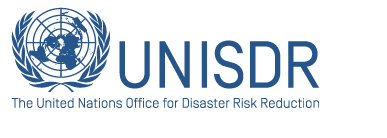The fact that the percentage of people who could be evacuated without difficulty almost doubled with sufficient time highlights the importance of early warning systems and ensuring that these alerts reach all community members, regardless of possible obstacles to mobility or communication.
The Head of the UN Office for Disaster Risk Reduction (UNISDR) Margareta Wahlström said: "The results of this survey are shocking. They clearly show that the main reason why a disproportionate number of people with disabilities suffer and die in disasters is because their needs are ignored and neglected during the formal planning process in most situations. Often their survival and safety depends entirely on the kindness of family, friends and neighbours."
"I would like to express my gratitude to the 5,450 people from 126 countries, sometimes with the help of a family member or friend, who have made the effort to complete this survey, which provides new insights into how to build a more resilient world in the face of disasters for people with and without disabilities".
"UNISDR will endeavor to fully consider their knowledge and experience at the World Conference on Disaster Risk Reduction 2015, at which members of the United Nations will meet in Japan will adopt a new global framework for reducing disaster risk that will replace the current Hyogo Framework".
The five biggest threats or disaster risks faced by survey respondents are: floods (54%), extreme weather (40%), tornadoes (39%), drought (37%), and earthquakes (27%).
The elevated percentage of respondents who have some degree of difficulty in hearing (39%) or seeing (54%), walking or climbing stairs (68%), or some form of communication difficulty (45%) highlights the challenges of evacuation processes.
This survey, which consists of 22 questions, also reveals that 71% of respondents do not have any personal preparedness plan for possible disasters. Only 31% of those surveyed always have someone to help them evacuate, while 13% have no one to assist them.
Just 17% of respondents had heard that there was a plan for disaster management in their city, town or community, and only 14% reported being consulted. Meanwhile, 50% of respondents expressed their desire to participate in community disaster management, while another 21% were unsure, and 24% said no.
The responses received in time for analysis prior to the International Day for Disaster Reduction on October 13 were provided by 52% of women and 48% men. UNISDR has decided to continue the survey through the end of the year to expand the sample.
Some personal responses:
"If I knew about overnight bad weather ahead of time, I could sleep in my wheelchair to retreat quickly."
"I would be with my guide dog and would go to the bathroom in case of a tornado."
"Because I can not hear the sirens when there is bad weather, I have to stay awake until I see the storms have subsided."
"I would store medication for circulation, thermal blankets and heaters, and try to save enough for additional heating costs during winter cold spells. I try to have provisions that do not rely on electricity in case there are cuts."
Recommendations of respondents for the next global agreement on disaster risk reduction:
Community awareness - people have to think about the needs of their neighbours and realize the potential problems of the disabled in the face of disasters; Wheelchair access is needed for evacuations, and all emergency shelters must have electricity; The incorporation of disability issues should be prioritized for communication in emergency situations; Mobile applications on disaster risk reduction should be made available to people with disabilities; Adequate facilities to meet the needs of people with disabilities in emergency shelters; A solid plan for the provision of vital medicines in emergency situations; Cost-effective technologies to help people with disabilities to evacuate buildings; "Do not use colours or small letters, I am colourblind."
Related links
Download the release in PDF




